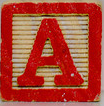Cards are Decko's building blocks. They're like atoms of data that can be combined and connected to create all kinds of new data structures.
Many web systems have some parallel to cards. Wordpress has "posts", Drupal has "nodes", etc. But Decko takes the atom idea much further. For example, if you have a Company card (say Widgets, Inc) that you want to attach several smaller bits of information (address, logo, contact person, etc), then each of the smaller bits of information is also a card.
In contrast, to add microstructure to a Wordpress post, you must create new custom something-or-others that themselves are not posts. The same goes for Drupal nodes. These custom something-or-others can require custom interface, custom code, and custom database tables, none of which are familiar to the rest of the system. A standard site might have half a dozen modules installed, each with custom subsystems that have no idea that the others exist. This makes data and system integration extremely difficult.
Decko's deeply atomic approach yields huge benefits. Since everything is a card, you can use the same data and interface patterns over and over again. Everything can be edited in place, without shifting context. There's just one modules api, one RESTful Web API, and one rules system. The native query language is designed for querying cards, and the views system is designed to display them.
In short, Decko just does one thing: it handles cards. But that one thing adds up to an extremely powerful yet simple management tool.
Example
In Decko, pretty much everything is a card. An address? That's a card. An Image? That too. File, User, Search... they're all cards.
Here's a simple image card in "open" view:
How To
understand card structure
A card is essentially a key/value pair. In Decko terms, every card has a name that serves as its key and content that serves as its value. The nature of that content depends on the card's type.
Both the key and the value have plenty of added meaning/power within Decko. Card names, for example, handle variants, compounds, and context, and card content has special handling for types, revisions, structure, links, and nesting.
But ultimately a card isn't a scary thing. It's just a named chunk of information .
use cards
Since everything in Decko is a card, learning how to use cards is basically the same as learning how to use Decko. You can start with a high-level introduction to Sharking or go straight to lower-level Feature.
Tips
Just one: try it out. It's easiest to learn the card game by playing it.
